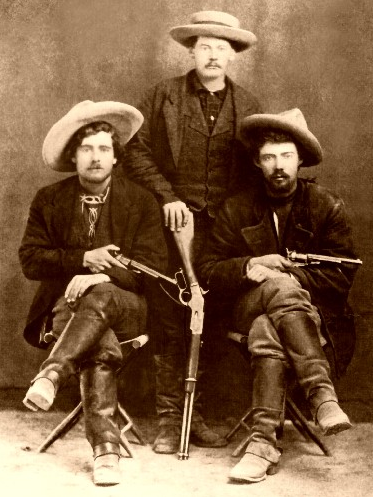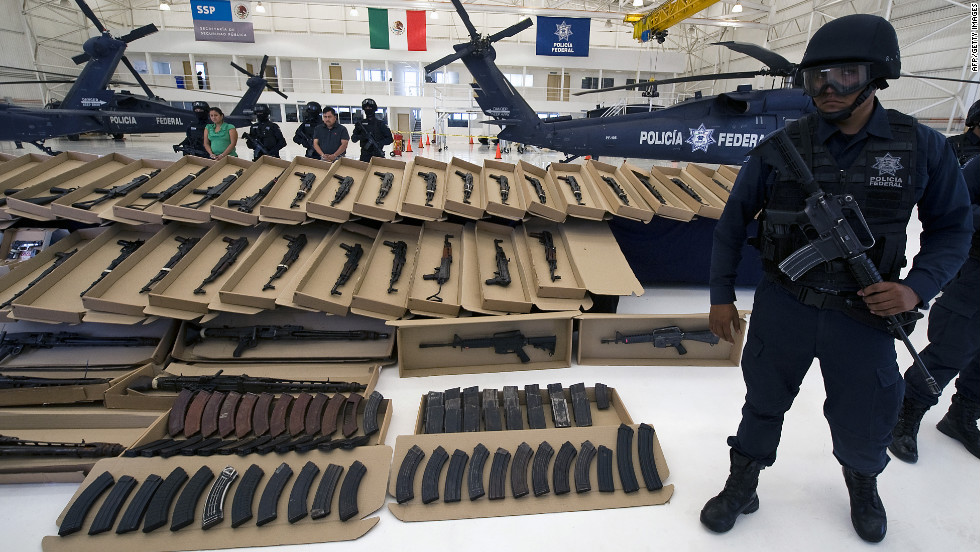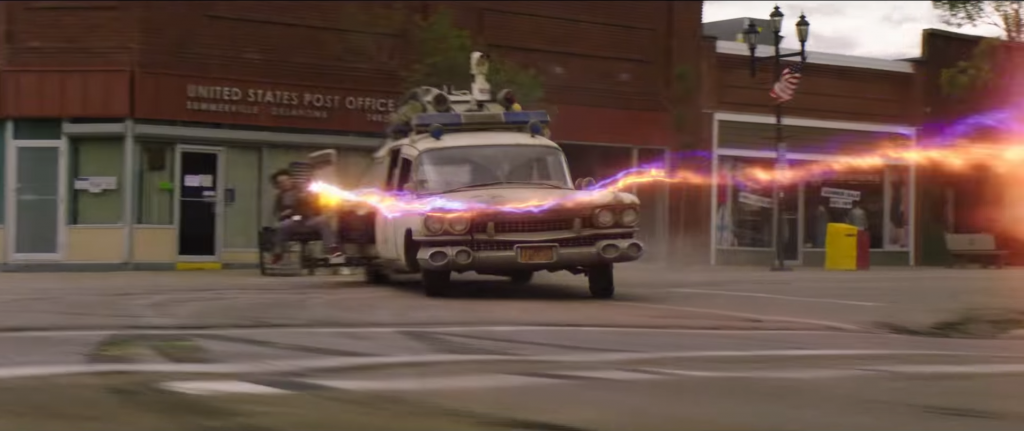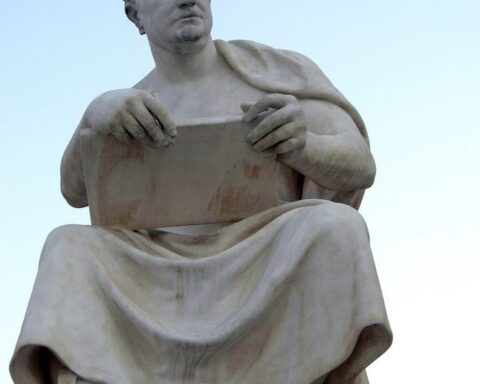Editor’s note: The following is extracted from Triggernometry: A Gallery of Gunfighters, by Eugene Cunningham (published 1934).
Environment made him — this composite figure we have come to call The Gunman. Lineal descendant of every venturesome, fiercely individualistic pioneer of the Leather-stocking days, in the Gunman’s veins ran the wild blood of Boone and Kenton—and Simon Girty.
His birthplace hardly concerns us. In choosing a cradle for our composite character, we could draw upon Iowa farms, the slums of New York, log cabins in the bottom lands of the Brazos and the Trinity Rivers, quiet communities of Missouri or Wisconsin, sprawling ‘dobe ranch-houses of the Southwest….
But where he was born is immaterial. There was in him the urge to look over the next hill. Nothing could halt him. Like water, he found his own level.
Circumstances had decreed that he should be born within a period covering the westward sweep of settlement. So he must be born at a time which would set him functioning within the years 1860 to 1900. That span of forty years roughly limits the Gunfighter.
As for his stage — approximately it was the vast, wild region between Milk River and the Rio Grande, between the Mississippi and the Pacific Ocean. Wherever the Gunman might first see the light, inevitably he would catch the spotlight somewhere in this frontier region.
The cattle-trail knew him, whooping behind the longhorns and looking through the dust toward blazing nights in Abilene, Caldwell, Dodge, Hays City. He dug gold or he preyed on those who dug it in a hundred now forgotten camps. He sat with the green eye-shade low over his steady, inscrutable eyes, at the faro and stud poker tables. He stood behind a star, The Law of frontier communities. He stood before the star — and thumbed his belligerent nose at the symbol. In short, wherever there were vast spaces unpopulated save by wild animals and wilder men — there he was, The Gunman.
His story is the story of the frontier. Not all of it, of course! But if we add the record of the men with whom he brushed elbows, and his women and their women, The Gunman’s story is pretty much the Story of the West, within those limits of time and space mentioned as his stage.
What, then, was a Gunman?
The most apparent, the most basic, interpretation of the term would be no more than “a man possessed of a gun.” To the early settlers, lying up behind the walls of their crude forts, fearing the onslaught of the red men during “the light of the moon,” and attempting to compute the armed strength of the Indians, any boy or man possessed of rifle or smoothbore and capable of taking the war-trail, was counted “a gunman.”
But as what we are pleased to call The Frontier marched westward across the Rockies, the word took on a narrower, a greatly specialized, a more technical, meaning:
When a Gunman was mentioned, the speaker did not intend to designate a man possessed of a rifle. Paradoxically, the smoothbore musket, the rifle, the shotgun— the only guns, in strictest technical use of the term— were eliminated from consideration.
By “gunman” was really meant “pistolman.”
In the heyday of the Genus Gunman the term took on an implication still narrower. When you said of a man that he was a gunman, you meant not only a pistolman— a man bearing one or more pistols. You meant to designate (and were understood to designate) a man specially skilled in the use of a pistol—and much more than normally ready to demonstrate that ability in blazing, homicidal gunplay. The word gunman had flexed to neatly take into account, not only the weapon, but the character, of the man you were discussing.
It was apt to be synonymous with “killer” in the stories written by the oldtime newspaper men. Not always! For there were also many men like some of the figures in this Gallery—upstanding, outstanding, peace officers; grim men who held the fort against the killer type of gunman; gunfighters who could match speed at “leather slapping” and deadly accuracy of marksmanship with any of the other variety, but, withal, men who shot only when they had it to do.
Perhaps this development of the gunman, the gun fighter, was no more unnatural than the backwoods men’s development of uncanny skill at rifle-shooting, which so amazed and discomfited the British during the American Revolution.
The Civil War was raging, at the beginning of the Gunfighter Era. On the frontier every able-bodied man wore weapons and if unable to use them — so much the worse for him! A man of the other side, or an Indian warrior, would the more quickly and easily take his scalp. Police protection there was none, either in the community or the surrounding country.
The War ended. Back to civil life came young men spoiled by four years of camp-life and killing for quiet existence. As they flocked to the West they brought with them the weapons, and the skill in their use, the readiness to practice that skill, gained from army experience. Their new life was a hard life, a man’s life. They learned pugnacity — if it were necessary to acquire the quality! — by fierce battle with the pioneers’ natural foes, the country itself and its copper-skinned natives. This belligerence could not easily be laid aside in their contacts with their own kind and color.
Killing, it seems indisputable, would be natural with such men. An old resident of Abilene, watching that famous marshal Tom Smith perform, commented that the Texas cowboys were like wild men; that they did not understand (nor appreciate!) Tom Smith’s ability with his big, hard fists. To me, this observer’s accent of surprise has a good deal of naivete about it!
A Texas cowboy, riding into Abilene in the drag of a longhorn herd, was not an ordinary man in any sense of the word. Born, perhaps, in a frontier cabin, he was used to seeing Comanche or Lipan or Kickapoo or other hard hitting horse-Indian descend upon his section with the light of the moon. He had perhaps seen his mother kill a warrior who was trying to kill or capture one of her children.
He had from earliest childhood learned to depend upon himself in the fierce battle for survival. His associates in cow-camp or little cow-town were of the same hard, self-sufficient breed. When they disagreed among themselves and came to fighting, they brought into play the methods learned in Indian-fighting. Fist fighting was not developed because it was not efficient in the removal of an enemy. But the six-shooter was a natural weapon. Olmstead, an early traveler through Texas, wrote that an inventory of the Colt revolvers owned in the state would approximate in numbers the census of the male adults of the state.
When W. W. Mills, brother of Brigadier General Anson Mills of cartridge-belt fame, came to El Paso in ’58, every male citizen regardless of age or vocation took his six-shooter from beneath his pillow the first thing in the morning, and blew upon it gently. He might possibly omit washing his face. He might probably skimp his oral hygiene, confining efforts in that direction to a bite on his plug of Horseshoe. But he would never slight the really vital ceremonies of life on the frontier.
As he finished buttoning his shirt, he would never forget to slide Colt or Remington or Smith-and-Wesson into the holster on his thigh; nor fail to adjust it so that his hand dropped in easy, natural fashion to grip its butt.
The green Indianan, Mills, who still regarded a necktie as a more important part of his costume than the product of Colonel Colt, once burst forth upon the public street in what was — for the day and place — semi-nakedness. An acquaintance jerked him frantically to a halt.
“Buckle it on, Mills! Go back and buckle it on!” cried this experienced citizen. “We don’t often need ’em, but when we do need ’em, we need ’em—oh, God!”
But there was a difference, even on the frontier, between being a man who owned and could “sling” a six shooter, and being a gunman. Already, the term was taking on a somewhat sinister implication. Pains were taken to distinguish between a gunfighter and a gunman.
“Yonder’s John Wesley Hardin, the notorious gunman,” a man might say to a stranger, indicating one of the “sights”.
But Hardin was not an officer; his forty-odd killings were on the Law’s left hand. He was a dangerous man, a killer, belligerent as a gunpowder-dieted bulldog. So–
“That’s Jim Gillett! City Marshal!” the same stranger’s guide might have put it, indicating still another of the sights. “Man! but he’s a lightning gunfighter!”
In even the outland, the frontier, community, the gunman might conceivably be an individual troublesome, dangerous, only to his own kind. But however professional his outlook in the matter of taking on competition, he was not, could not be, entirely normal. He must be different from the average inhabitant, who wished only to work and play, make money and enjoy himself.
The Typical Gunman is hard to create. Personal acquaintance with a few furnishes evidence that they varied as widely in size and coloring and disposition as do other men. But certain traits they did own in common.
Some were men of blind, bulldogged courage — men who seemed to have been born with no idea of fear; who could not be convinced (short of killing them) that they could be mastered by anything that walked on legs.
Others were almost arrant cowards. They depended on prestidigital skill at weapon-work to give them an advantage over the ordinary man. Their notches often represented the deaths of mere amateurs in the ancient craft of bloodletting. They — to borrow the expressive modern phrase — “never gave a sucker a break.” They preferred to take no chances whatever, if that were possible.
Give them a nice armor-plated ambush and their victim coming unsuspiciously toward it — as Sheriff Brady walked toward the ‘dobe wall that sheltered Billy the Kid.
Give them a chance to tamper with the six-shooter of the other fellow, so that they could seem to be pulling and shooting on equal terms, while actually throwing loaded dice — as Billy the Kid twirled the cylinder of Bad Man Joe Grant at Fort Sumner, so that the hammer would click first on an empty chamber.
Others, still, would calmly “take their foot in their hand” and withdraw from a situation where the advantage was not with them — as Wild Bill Hickok is said to have done, when he met that little Texican fire-eater, John Wesley Hardin, in Abilene. They were not considered cowardly for such strategic withdrawal – merely careful. Which reminds me!
There used to be an old hawk-faced, snowy-haired man around Fort Worth, who had in his younger days policed various little towns on the fringe of Things Tremendously Texan. He had been a good town marshal, yet he always said that he was not much of a shot, not fast on the draw. These paradoxical statements were puzzling until the time when he was moved to discuss the psychology of the Gunman breed. He mentioned a certain bad man hardly remembered by one so technically-informed as Captain Bill McDonald, even, who was of the listeners.
“He was callin’ hisself The Terror o’ the Prairies, or some such foolishness. He was a-ridin’ across Texas an’ folks was bustin’ down the timber, hightailin’ out o’ his sight. He’d always send word ahead that he was comin’ like a blue norther an’ he took plenty o’ room. Folks better be gittin’ back, else he’d crowd ’em clean to the bone-yard.
“Well… he was headin’ our way an’ his reputation was gittin’ bigger all time. I was town marshal an’ our folks was kind o’ wonderin’ what I’d do when this lightnin’ gunman got to us. They knowed I was not fast on the draw or a special good shot. I never told ’em what I aimed to do.
“But when the Terror come lopin’ his big bay hawse into our one main street an’ let out a yell, I dropped down behind a rain water bar’l on the street, about as sudden as my knees’d bend. For this Terror, he had a gun in each hand an’ like I said, I was no gunman.
“He come ridin’ on, lookin’ one way an’ another like a mad bull crossin’ a pasture—a big, fine-lookin’ darkish man with long mustaches. When he come up even with me, I riz up from behind that bar’l with a sawed-off ten-gauge shotgun lookin’ him mean in both eyes. Quick as lightnin’, he flipped them six-shooters around to cover me.
“Well, sir! The’ we was! He could kill me easy. But not quick enough to keep me from blowin’ him in two pocket-high. We looked at one another. Then I says to him: ‘ Y’ drop them plow-handles, Mister, or I’ll about cut y’ in two!’
“He never wanted to do it. I could see his thumbs a-quiverin’ on the pistol-hammers. But the trouble was, he was just wantin’ to kill me. He never wanted to kill me so bad he was willin’ to sure git killed, hisself, a-doin’ it. So he let the Colts drop an’ he rode on, right out o’ our town, leavin’ them fancy six-shooters lie in the dust.
“Huh? Coward? No-o-o! I reckon not… He stood up an’ shot it out with the town marshal down the line from us. He plugged that marshal before he got killed. But that was not the same thing. He was buckin’ a six shooter, that time. Six-shooter ain’t like a sawed-off ten-gauge loaded with Blue Whistlers. Y’ got a chance o’ bein’ missed by the .45 slug that’s comin’ at y’. N-o-o… he wasn’t no coward. He’d take a chance on gittin’ killed, to kill the other fella. But he would not face certain death for the pleasure o’ killin’ him. Mighty, mighty few would ever buck a sure thing!”
There were members of the gunman’s fraternity who had more than average intelligence, more than ordinarily-sensitive nervous systems. They faced the odds knowingly and unflinchingly. But, whether a gunman were unthinkingly brave, or a coward, or a man afraid but driven on by will, he was never a normal individual. He could not be!
Very rarely did the killing of a man settle anything — for the killer. There were the friends and relatives of the late deceased. The killer had to consider them; had to watch for and guard against them. Even if the gunman’s string of Boot Hill tickets brought no aftermath of vendettas by brothers or cousins or close friends, there was another penalty —
By virtue of his record, the gunman had set himself up as shining target for rivals’ lead. Night or day, sick or well, generally it made no difference in the life of the gunman. He must think of the time sure to come, when some such belligerent, confident, gentleman as that Wolf Killer of the Washita, Clay Allison, would ride into town to inquire of the nearest bystander:
“Where-all’s that dam’ This an’ That, that ‘lows he’s so handy with a gun? I come to see him try slappin’ leather with me!”
The consequence of this was to make the average gunman what the oldtimers so expressively called “cat eyed.” The more noted he was, the more his life must resemble that of some scarred old hunted lobo; the more cautious he must be in his every action; the more analytical he must become, before every tiny, ordinary detail of living.
Some almost imperceptible alteration in the location of a familiar rain water barrel on the street might mean a man with a gun behind it.
A man walking upon the street with bandaged hand might not be injured — the bandage might merely conceal a derringer or “bulldogged” pistol—what was known in the trade as “a stingy gun.”
Walking into saloon, store, poolroom, or other gathering place of a frontier community, hardly more than a glance around was necessary to locate the gunmen present. The observer had only to note how many sat with backs against something solid! It was Wild Bill Hickok’s lapse from this elementary precaution of the gunfighter which cost him his life to a rank amateur and cowardly murderer, Jack McCall.
A cautious man… a suspicious man… the gunfighter was bound to be both. He must be the original “touch-me-not,” eschewing the friendly slap on the back, the rough, goodhumored horseplay of the frontier. Cocked and primed for trouble, ready in case of slightest doubt to shoot first and inquire afterward, he was a prickly customer!
Wild Bill Hickok, in Abilene, killed his friend Mike Williams, because Williams ran up on him unexpectedly with a pistol drawn. He was not the gentleman — our gunfighter of any place — upon whom to close unceremoniously, from the rear.
J. Marvin Hunter, of Bandera, who collects frontier history for that invaluable little monthly The Frontier Times, was the brother-in-law of George Scarborough, the famous deputy United States Marshal who killed Old John Selman and was himself killed by Bill Carver out of the Wild Bunch.
Marvin tells of an evening in El Paso, during the ’90s, when he was sent by his sister to meet Scarborough at the station and tell him of their new address, to which she had moved during his absence from town on a case.
He was late going about his errand. He fairly trotted down San Francisco Street toward the station. But the train had come in and Scarborough had been seen heading toward the center of El Paso. Marvin, only a youngster, ran that way to overtake his brother-in-law. Presently, he saw the tall figure ahead of him. Without considering anything but his errand, he quickened his pace.
“Well, I finally caught you!” he panted.
The physical response was as flashing, as automatic – and as explosive as the jump of a sleeping wolf touched by a rolling stone. Scarborough whirled with a blurred twinkling of his hands. Two Colts were trained upon a much frightened young man’s anatomy before he could more than gasp. When identification was complete, Scarborough reholstered the pistols and began to speak slowly, with tremendous earnestness:
“Boy! Don’t you ever, ever run up behind a man like me, again, yelling that you’ve finally caught him! There are entirely too many men looking for a chance to catch me—with a gun poked in my back—for me to take chances. The wonder is, that I didn’t find out who you were after you were dead!”
Scarborough, incidentally, belongs to the category of peace officer-gunfighters who used their amazing skill with pistols on the side of law and order. Gillett, Stoudenmire, Hughes, Tom Threepersons, Billy Breakenridge, Jim Courtright, “John L.” Sullivan, Bill McDonald, Tom Horn, were others of this bracket. They were as quick on the draw, as deadly-accurate after drawing, as any of the swaggering and lawless killers whom they kept in check. But the killers had one advantage of them — the peace officer was not inclined to shoot unless forced into it. The killer was under no such restraint….
Because of the sinister implication the word so often owned, none of these Star-Wearers would call himself a “gunman” — regardless of the fact that their records show ability at “slinging the guns” bordering upon the magical, equal if not superior to that of any gun-toter who ever stood on The Law’s left hand. In the mechanical sense, at least, they must be classed as gunfighters in any such Gallery as this.
In other qualities, too, they shared — bravery, cold nerve — efficiency in time of stress. No wearer of the sixes, whether he stood before or behind an officer’s star, could make his mark without most of these characteristics.
So much for the Gunfighter in general. The records of particular outstanding figures which follow will show in some degree the forces which shaped these frontiersmen, the circumstances which moved them this way and that upon their stage, something of the color of that stage-setting, better than much talk and philosophizing about it all.
“The ethical philosopher may base his judgment on such criteria as he will,” says that shrewd and genial connoisseur of life, Charley Finger, “but the man of action in the wild lands holds fast to his long line of heroes and to them is applied one test and one test only —the test of daring.”
Most of my “subjects” will, I believe, pass this test.










4